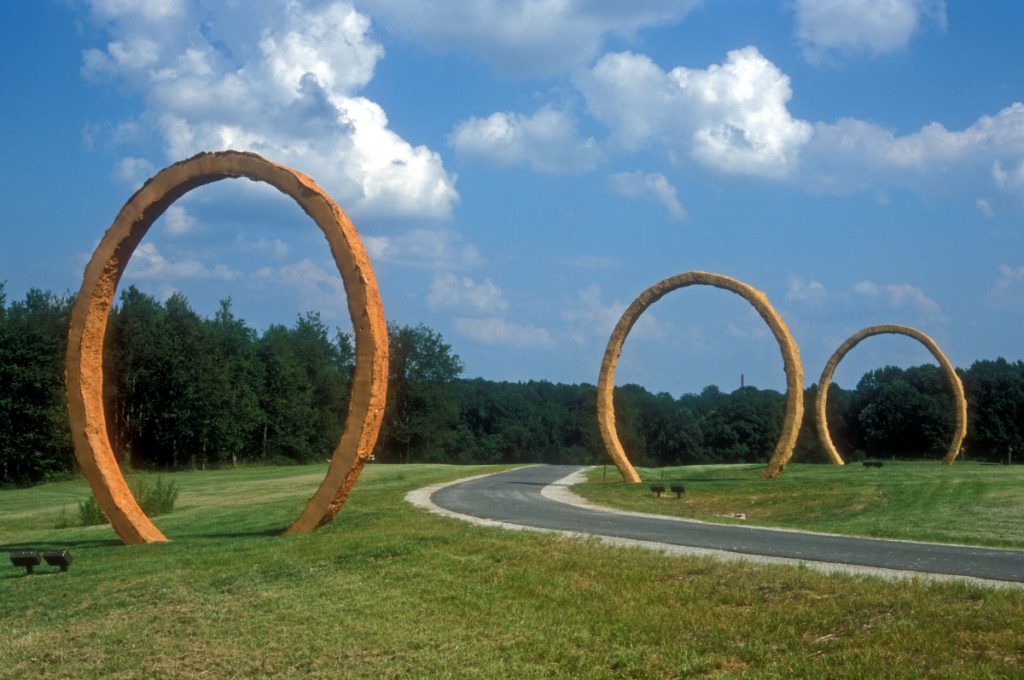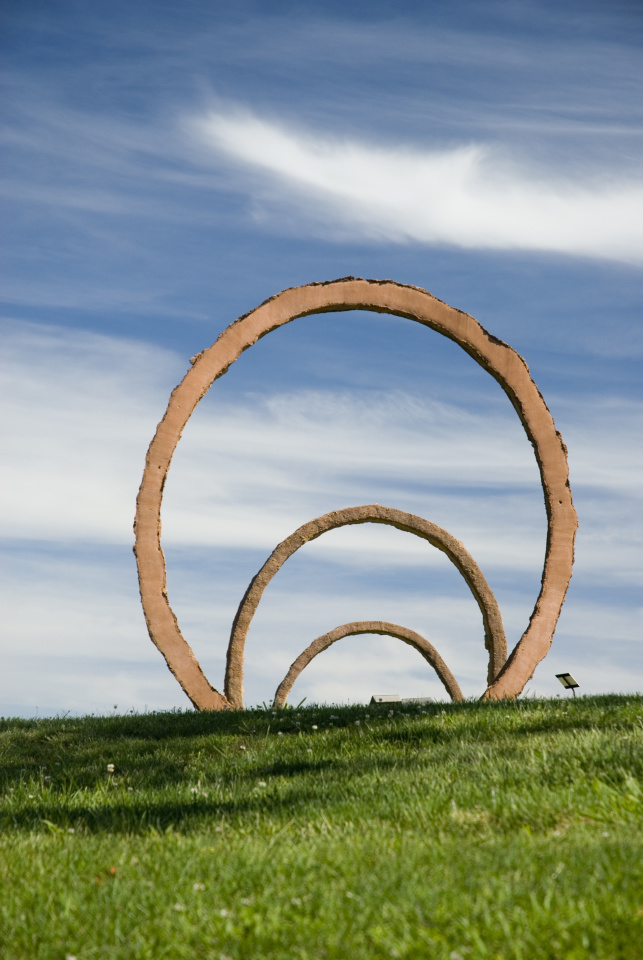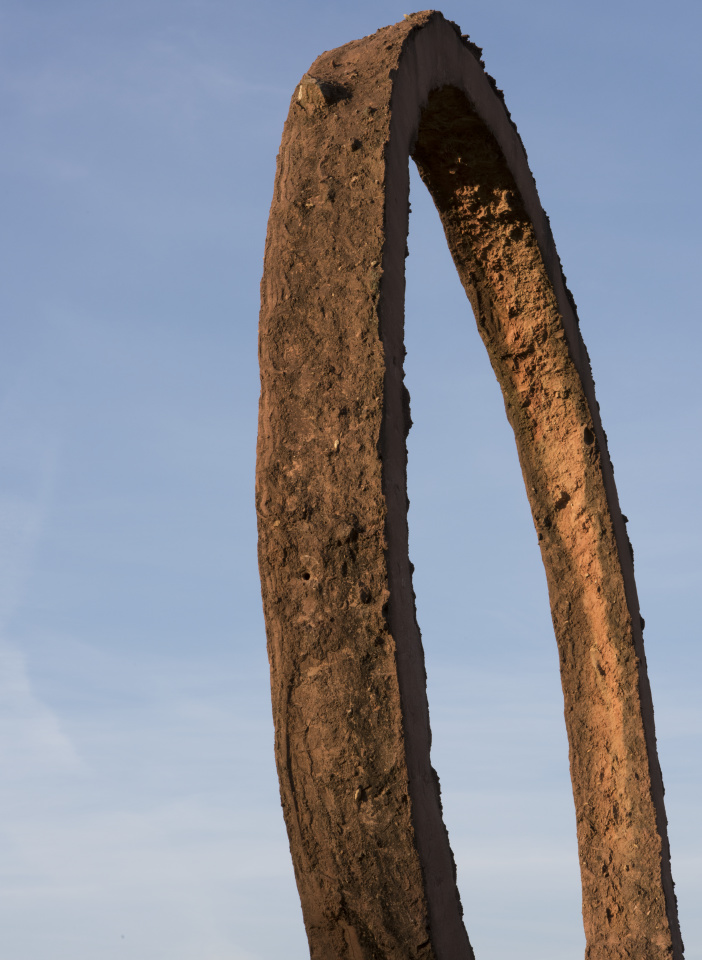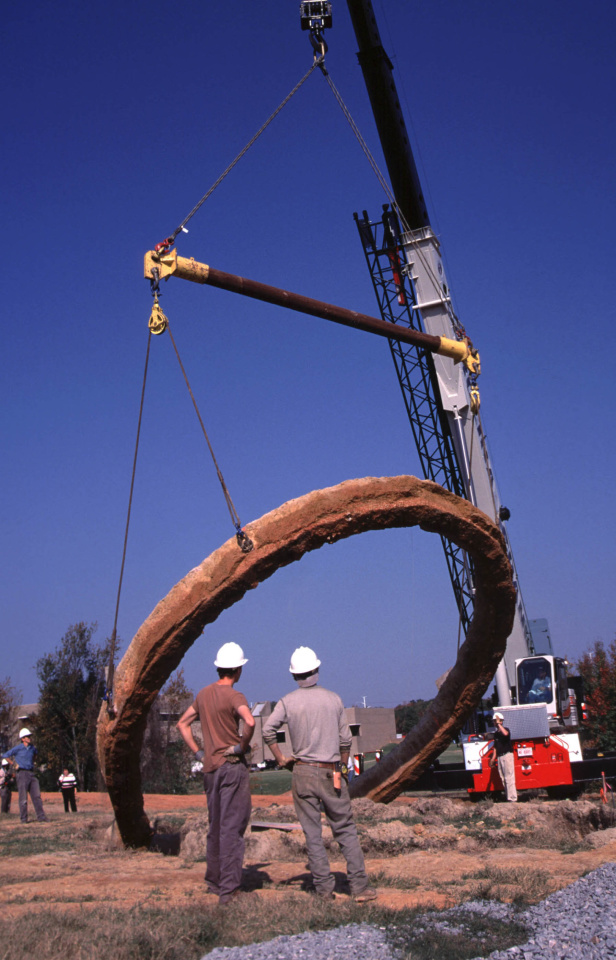Giro (obra de arte)
Información sobre la obra de arte
Key Ideas
- This three-part sculpture was made using an “earthcasting” process that the artist developed. The process involves digging large shapes directly into the earth and then filling the open spaces with steel frames and a concrete mixture.
- This is a site-specific work. It was designed to be displayed in the exact location where it stands. It was also created at the same location.
- Thomas Sayre is a Raleigh-based artist who creates his molds by sculpting directly in the earth.
- The title of this work comes from a poem by W. B. Yeats, who thought of history as “the complex movement of a spiral.”
Más información
This site-specific sculpture appears to spiral out of the landscape beside a paved trail in the Museum Park. It was designed for and created in this exact location. It contains local dirt, rocks, and sticks that are permanently part of each ring.
Thomas Sayre is the Raleigh artist who designed and created this work. He sculpted the rings using the earthcasting technique he developed. His artistic process for creating Gyre involved using a backhoe to carve three separate elliptical shapes into the ground. Reinforced steel frames were placed inside these openings, to serve as structural supports, and a concrete-iron oxide mixture was poured into the three trenches. The mixture was left to cure for 28 days. Then a crane was used to pull up each ring, position it, and lower it into place on a foundation.
Gyre derives its life and its spirit from an interaction between the intentions of the human hand, my hand, and the grain of nature, what’s in the ground itself. The sculpture is the product of a careful collaboration of what I wanted to see on this site, as an artist, and the rich marks and character provided by the earth and the terrain itself. All the rocks, color, and much of the texture which lives in this particular earth intersected with the teeth marks of the backhoe and the impressions of feet and the mark of shovels and other tools which carved these molds.
Thomas Sayre
The sculpture’s shape looks different depending on the viewer’s perspective. When it is viewed head on, it looks like concentric circles. When it is viewed at an angle, it appears to be a spiraling structure. According to the artist, the three rings represent his “lifelong study of the interplay between man and nature.”
The title, Gyre, is a little-used English word that was in some ways popularized by the poet
W. B. Yeats. Yeats compared the cyclical nature of history to a gyre, a spiraling form extending into the air, where, as time goes on, we arrive again to where we started, yet not quite. We don’t land exactly where we began.Thomas Sayre
Etiquetas: movimiento de tierras, geografía, sitio específico
Recursos adicionales
Recursos para los profesores
- Read an interview with Thomas Sayre.
- Visit a web page that explains Sayre’s earthcasting process.
- Watch a documentary about the artist.
- Read an article about another work by this artist.
Recursos para los estudiantes
- View an interactive map to see more of Sayre’s work.
- Watch a video of the artist’s earthcasting process.
- Visit the artist’s website to view his sculptures, paintings, and public artworks.




